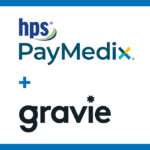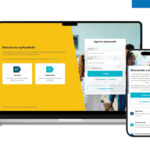
Source: Medical Economics
April 3rd, 2024
Here’s why physicians, other clinicians and employers are getting behind zero-interest payment plans.
Even with inflation at its highest in 40 years, it can’t keep pace with the soaring costs of health care in the United States. In fact, out-of-pocket costs have grown nearly twice as fast as the economy since 1960. This has placed an inordinate financial strain on the average U.S. household and has resulted in challenging decisions that negatively impact medical care.
Out-of-pocket health care spending averaged $1,425 per capita in 2022. More than four in 10 adults (43%) say they or a household member have put off or postponed care due to cost. High costs have also prompted many families to look for alternative solutions to finance their health care. A number of private companies offer medical payment products intended to help cash-strapped consumers afford needed care.
In this article, we’ll survey commercial medical payment product categories, including their pros and cons from the perspective of patients, providers and employers.

Medical debt background
How did we get here? In 2022, the U.S. spent 17.3% of the nation’s gross domestic product – $4.5 trillion – on health care, more than triple the percentage it spent in 1960. As a result, employers have had to shift costs to employees through higher out-of-pocket responsibilities (in the form of copays, coinsurance and deductibles). This is a burden for everyone, especially people with imperfect credit. A full 44% of Americans who have a credit score of 669 or lower claim their deductible is not affordable.
Providers and employers have tried to mitigate the harm by extending consumer credit for delayed payments. Such measures, in the form of medical credit cards and loans, are gaining popularity, but they often fall short of ensuring all consumers can afford the care they need. An individual’s credit rating could impact their ability to access credit. And much of the credit in the marketplace is provided at high interest rates – making the mounting medical debt problem incrementally worse over time.
A range of solutions
Over the years, a number of solutions have been brought to the marketplace. In our analysis, we see three categories of medical payment products:
- Provider-based point solutions have the potential to cover everyone including the uninsured, but applicants for these solutions typically must prove creditworthiness. In addition, this solution is constrained in that the credit only covers amounts owed to a specific provider-creditor.
- Employer-based solutions are generally offered to all employees at a particular employer, but they often cap credit for out-of-pocket costs at a level far below the consumer’s potential financial exposure. Caps rarely exceed $5,000 while the Affordable Care Act out-of-pocket maximum for a family plan in 2023 was $18,900. Another drawback is that employees, many of whom are confused by the red tape of health care bureaucracy, typically must sign up to get the coverage. Low adoption rates are common and severely limit the benefits of these solutions.
- Ecosystem solutions. These recent innovations uniquely bring employers, providers, insurers, and patients together to solve the out-of-pocket payment problem. These solutions pay participating health care providers immediately for 100% of what’s owed (including the out-of-pocket costs of the patient’s plan). Ecosystem solutions relieve providers of the arduous role of patient bill collector and bad debt manager. The payment solution company works with the patient to pay the balance, in some cases at no interest and spread out over a reasonable period of time. This “smoothing” allows patients to more easily fit these costs into their monthly budgets in an affordable manner.
Key considerations
To assist business owners with their decision-making, we have developed some key perspectives to consider. If you’re a provider or employer, here are some questions to ask:
- Are all of my employees covered? With employer-based payment products, all employees may be eligible, but that doesn’t mean all employees sign up. Look for plans that automatically enroll every employee.
- Are all of an employee’s costs covered up to their out-of-pocket maximum? Very few payment products cover it all, meaning even when employees receive in-network care they still have significant financial exposure.
- Are patients charged interest or fees on deferred payments? Most payment products charge interest, but a few don’t.
- Can employees negotiate payment schedules longer than 12 months from their treatment? Many products require payment within 12 months, though some ecosystem solutions extend timeframes longer.
- Does your employee solution require new hardware, software or integration? Some solutions are “big iron,” requiring significant and costly alterations to provider billing and revenue-cycle management systems. Others more easily consume standard claim and remittance files making implementation a light lift.
- Does your solution simplify the financial experience for the consumer? Americans recently reported receiving more than 70 bills and statements in a recent yearlong span, mostly in the form of explanations of benefits (EOBs). About a quarter of respondents claimed their EOBs (29%), medical bills (25%), and what they owe (24%) are difficult to understand. Fortunately, a number of solutions consolidate this blizzard of documents into one easy-to-read monthly statement and balance. Patients then make one consolidated payment instead of multiple payments to numerous providers. This service has been proven to increase provider collection yield and patient satisfaction.
- Does your payment solution encourage in-network provider use? Certain products are carefully crafted to do so, amplifying steerage and encouraging in-network use.
- Does the product cover employees in numerous geographies? It varies and remains an important part of your planning.
- Does it cover dental? Prescriptions? It varies.
- Does the product cover uninsured patients? Provider solutions may do so – but only if the patient is credit-worthy.
The variety and quality of payment product solutions have evolved in recent years, and it takes some comparison shopping to get the best of all worlds. Although the total cost of health care isn’t going down, there are innovative ways to provide relief to financially strained patients who have skimped on their own care. Low- or no-interest payment plans that eliminate complexity and guarantee provider revenue are emerging as options. The benefits will accrue to everyone involved, including the physician-patient relationship and employee retention.
Jonathan Moss, MBA, FHFMA, is vice president of consumer financial engagement for PayMedix.


